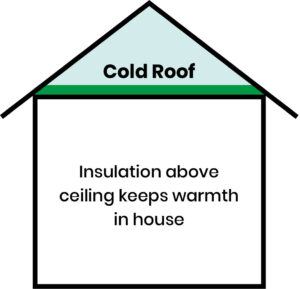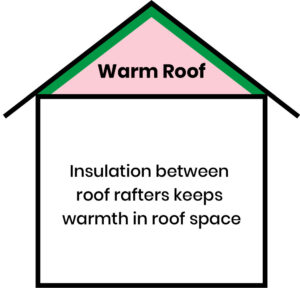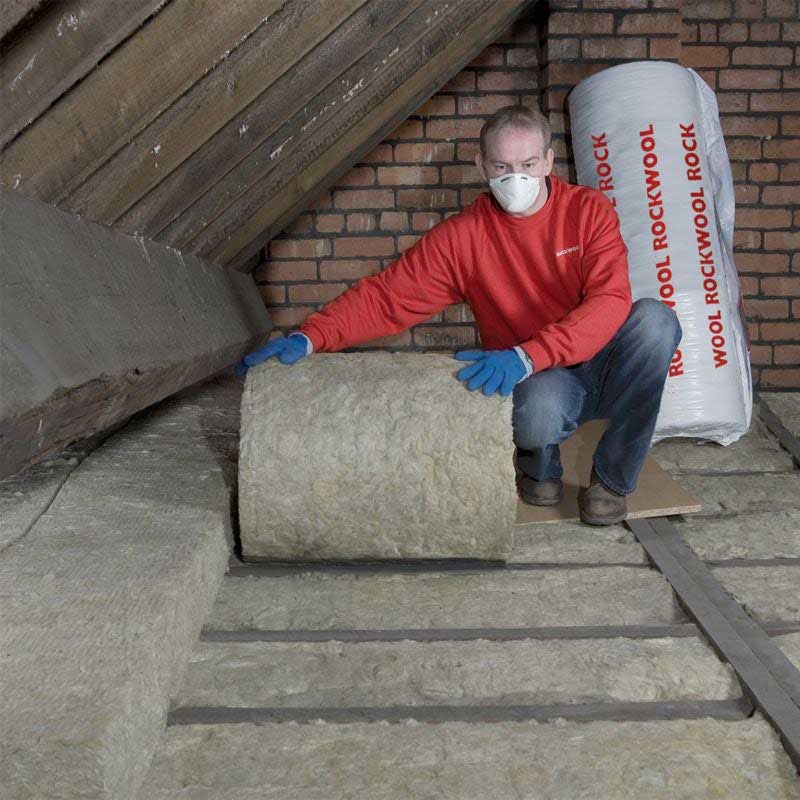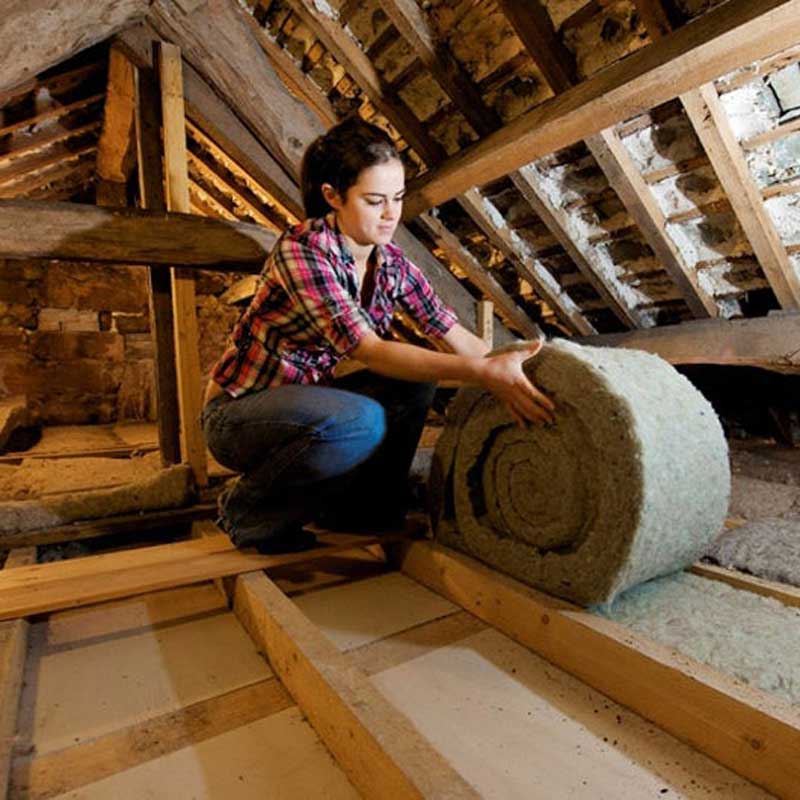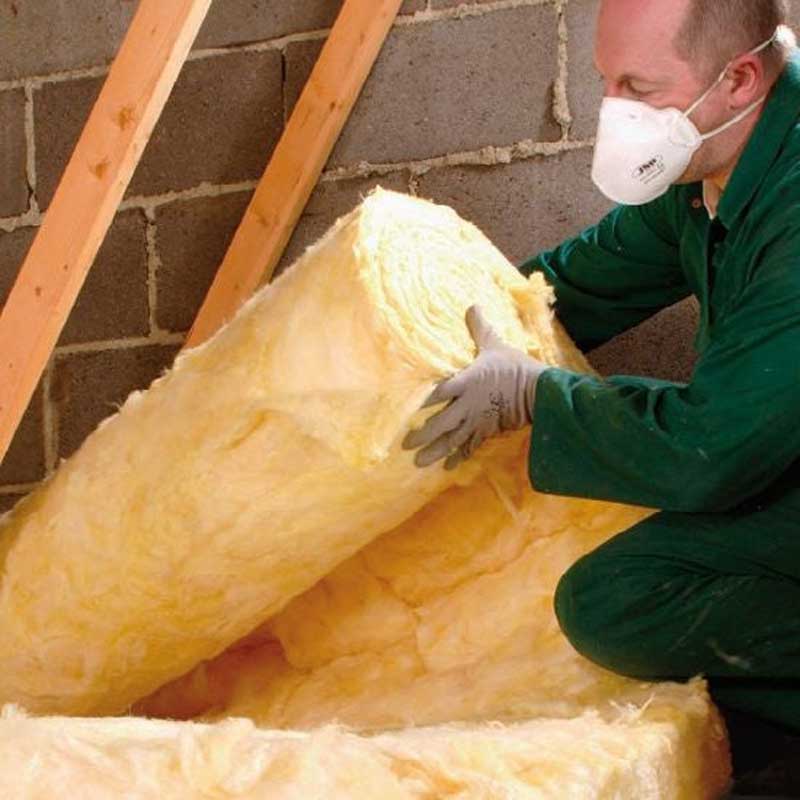Loft insulation is essential for keeping your house cool in the summer while toasty through the brisk winter. From natural sheep’s wool to affordable fibreglass, insulating your attic has benefits all year round, so why wait until winter?
If you’re wondering which type of insulation is easiest to install and how thick should insulation be, this guide is for you. We’ll answer those questions and more.
If insulating your loft yourself, your loft must be easy to access with no dampness or condensation problems. If insulating on your own isn’t possible, consult a professional tradesperson.
Table of contents
- How does loft insulation work?
- What are the benefits of loft insulation?
- Insulating joists vs insulating rafters
- What type of loft insulation do I need?
- What depth should loft insulation be?
- What materials should I use for my loft insulation?
- What else could I use to insulate my loft?
- The benefits of loft insulation
How does loft insulation work?
Understanding how loft insulation works is key to knowing which option is best for you. From windows, doors and walls, heat can escape from your home in many different places. Having said that, a big chunk of this precious energy (around 25% in an uninsulated home) gently wafts out through the roof.
Loft insulation stops rising heat in its tracks. This turns your attic into a shield between your warm home and the cold outside world.
From sheep’s wool to glass and even rigid boards, loft insulation comes in many materials, but they all work in similar ways.
How? By trapping heat in air pockets and stopping it from escaping into the atmosphere.
It works all year round, too. In summer, insulation stops warm air from coming in. This helps keep your home feeling cool and comfortable.
Laying rolls of insulation doesn’t mean you have to stop using your loft for storage, either. Just don’t compress the blanket of insulation, and remember to leave an air gap. This allows moisture to escape, and you can put down floorboards over the top.
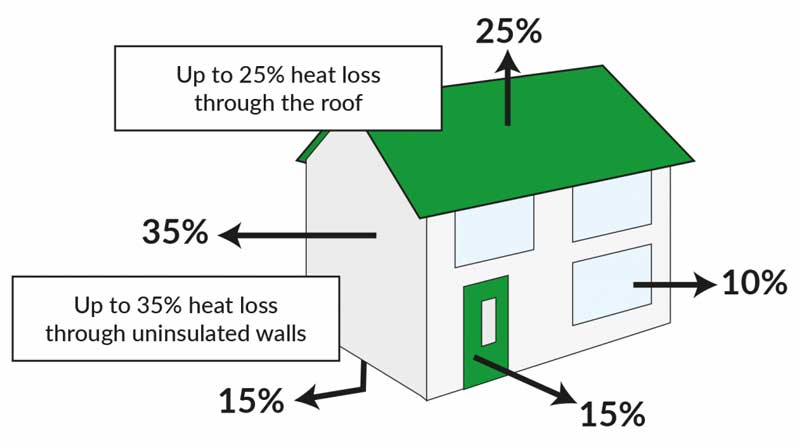
What are the benefits of loft insulation?
If you thought your loft was only handy for storing Christmas decorations. that’s not all. Here’s why insulating the attic is a clever trick that’s well worth your time and effort.
Suitable insulation throughout the seasons
Your home will feel warmer in the winter and cooler in the summer.
Fewer condensation issues
A well-insulated loft means you won’t have as many problems with condensation.
You’ll notice a difference
Homes lose a quarter of heat from the roof. So, if your home’s currently uninsulated, you’ll notice a huge benefit straight away.
Can last for decades when installed correctly
Done properly, loft insulation can be effective for up to 40 years (and up to 50 years if you use sheep’s wool).
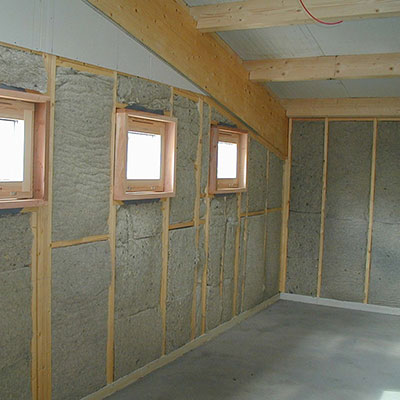
Efficient for your budget
It’s so cost-effective that it’ll easily pay for itself many times over. You could save up to £215 on your energy bills each year, according to the Energy Savings Trust.
Eco-friendly
You’ll be doing your bit for the environment. Currently, a third of all carbon emissions come from heating draughty homes.
Minimises external noise
Outside noise will be greatly reduced – good news if your home is under a flight path or next to a busy road.
Will help boost your EPC
Insulation can help boost your home’s Energy Performance Certificate rating. A huge plus if you were thinking of selling in the future.
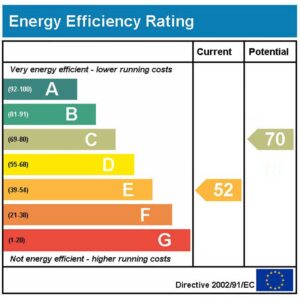
Want to insulate the roof itself? You can find out more about insulating a roof via our dedicated guide.
Insulating joists vs. insulating rafters
A pitched (sloping) roof has two options when it comes to insulation. You must decide whether to insulate the joists (the floor of the loft) or the rafters (the loft walls). How you choose depends on whether you want to create a cold or warm loft space.
If you only use your loft for general storage
Perhaps you only put your holiday items up there. Maybe some suitcases. In this case, creating a cold loft is normally your best bet. It’s less expensive, less fiddly and a relatively easy job to do yourself.
For a cold loft, you only need to insulate the space directly above the ceiling of the top story of your home. Luckily, there is an easy way to do this. Simply lay a blanket of insulation (known as loft rolls) between and over the joists of the attic. After that, you can choose whether you want to lay floorboards over the top or not.
If you plan to store some heat-sensitive items or want to use the attic for your hobbies
Is your attic your space for ‘you’ time? Somewhere you can put your items safely without worrying about them? In this case, you’ll need to create a warm loft. Warm lofts can keep the heat in the winter and stay cool in the summer,
Now, to achieve this, you will need insulation just under the roof in the rafters. This will need a little more technical know-how. Having said that, it can be worthwhile as it’s an effective way of keeping the heat in your home.
What type of loft insulation do I need?
Your options for loft insulation vary, depending on whether you plan to insulate the joists or the rafters.
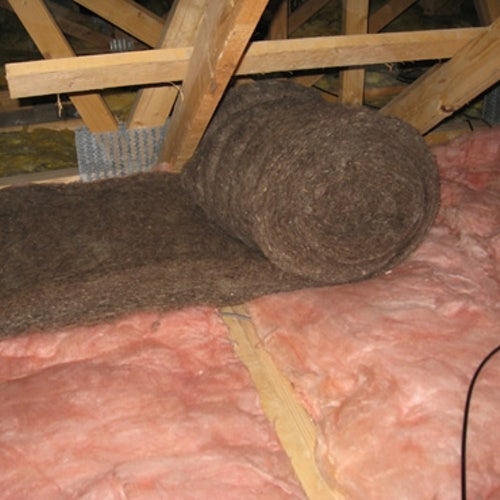
Insulating the joists
For a cold roof, you can take your pick of loft rolls. This includes:
There is even specialist acoustic wool, great for blocking out outside noise.
If you already have insulation in place, you can choose to use loose fill products to top it up. Rather than laying down a blanket of insulation, loose fill comes in bags. You can open and pour this into any space that looks a bit sparse. It’s a really easy job that requires no DIY skill whatsoever.
If your loft is damp, slab insulation is a great choice. It’s easy to fit, water-repellent and breathable. So you won’t get rot or mould.
Planning to use your loft for storage? Going for rigid insulation boards could save you time and effort, as you get boards and insulation in one. It is more expensive than loft rolls. However, they offer the same heat-retaining capabilities but are half as thick.
For example, you buy an insulation board with a thickness of 135mm. This has the same level of insulation as 270mm of mineral wool.
Whatever kind of joist insulation you go for, remember that the loft space above will feel very chilly in the winter and hot in the summer. This is not great if you want to store anything valuable.
You’ll also need to remember to insulate your pipes and water tank before any cold snaps as they could be liable to freeze.
Insulating the rafters
Your options for insulating the rafters are a little more limited. That’s because the products used to create warm lofts tend to be denser and more rigid than those used for insulating joists. Then there’s the little problem of how to get the insulation to stay put without falling.
Rather than loft rolls, you can buy mineral or glass wool insulation in batts. To hold these in place, you use battens of wood attached to the rafters. Alternatively, you can use normal insulation held in place by netting.
Insulation boards are also a great option for warm lofts. You can cut them to the right size to fit snugly between the rafters. Whereas you can put insulated plasterboard over the rafters themselves. This makes sure your insulation meets the required depth.
What depth should loft insulation be?
The government recommends a depth of at least 270mm. Having said that, many new properties are exceeding this going up to a depth of 300mm.
If you choose to go for 300mm (or more) you will lose a little space, but if your home feels cold it could be worth it.
Did you buy a house with the insulation already in place? Unless the property is a new build, it’s worth checking how deep your insulation is because it may be time for a top-up. The recommended depth was 200mm in 1995. So anything built before then likely won’t meet today’s insulation targets.
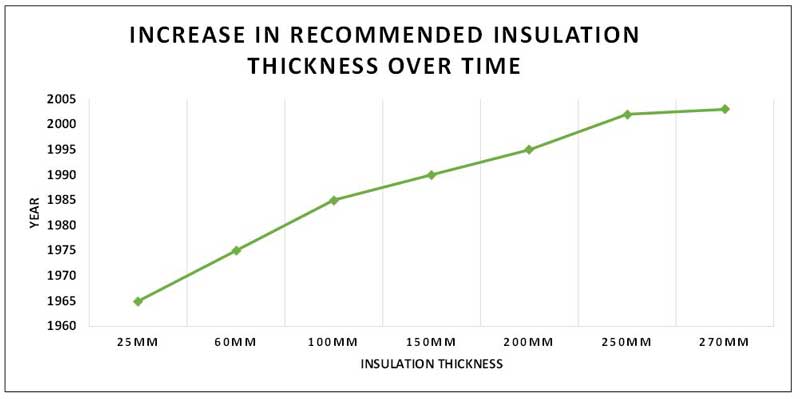
What materials should I use for my loft insulation?
Loft rolls come in a range of materials, and the type you go for will depend on how you’ll be using it. Don’t know your sheep’s wool from your mineral? Here’s an explanation of each.
Mineral wool
Mineral wool comes in rolls, like a blanket. You install them by laying them down between the joists and then placing them on top to take them up to the recommended depth.
You can also use mineral wool to insulate rafters by cutting and fitting them to size. To stop them from falling, use insulation fixings.
One of the best reasons for mineral wool insulation is that it’s lightweight and inexpensive. Manufacturers make the mineral wool from rock which they heat until it melts. Then it’s spun and bound together with resin and oil.
Sheep’s wool
Wrap up your loft with soft, natural sheep’s wool. Sheep’s wool insulation is safe to touch and won’t irritate your skin. So you can handle it without wearing protective clothing.
You can use it for insulating joists and rafters. It’s also great for absorbing moisture and preventing mould and rot.
Glass wool
The most popular type of loft insulation in the UK, glass wool (also called fibreglass) is one of the cheapest.
Manufacturers make fibreglass insulation by melting glass and sand together. Then spun to form fibres which are bound together with resin. The resulting blanket looks like sheep’s wool and is just as flexible.
Here is a summary of the pros and cons of each type of loft insulation.
| Type of insulation | Pros | Cons |
| Mineral wool | •Excellent thermal and acoustic insulation •Easy to install •Offers great fire resistance | •Will compress if you put weight on it •Can irritate bare skin |
| Sheep's wool | •Safe to touch •Easy to install •Pleasant to handle •Breathable (can prevent dampness from damaging wooden timbers) | •Less cost-effective •Will need more to be installed to get the same thermal values as usual •Not as good an insulation as other wool roll alternatives |
| Glass wool | •Fire resistant •Insect repellent •Eco-friendly (mostly made from recycled glass | •Most glass wool irritates the skin (protective clothing must be worn when handled) •Becomes less effective when wet •Not suited to damp areas |
What else could I use to insulate my loft?
While laying down loft roll insulation is a popular choice, it’s not the only option. In fact, some of the alternatives might suit you better.
Insulation boards
Also known as rigid boards, you can use these to insulate both joists and rafters. They’re a great choice if your loft is large.
One drawback is they are often more expensive than rolls. Having said that, they offer good thermal values at half the thickness. Also, you can easily store items directly on top of them. If you need to cut them to size, you can use a saw so that they fit snugly between joists or rafters. This also lets you be able to drill holes around light fittings.
Insulation slab
Slab insulation products are becoming increasingly popular. They’re easy to install, with most products friction-fitting between joists or rafters.
As well as keeping your home toasty, they’re one of the most fire-resistant choices. There are some slabs made from stone, but they’re still easy to cut and fit your space.
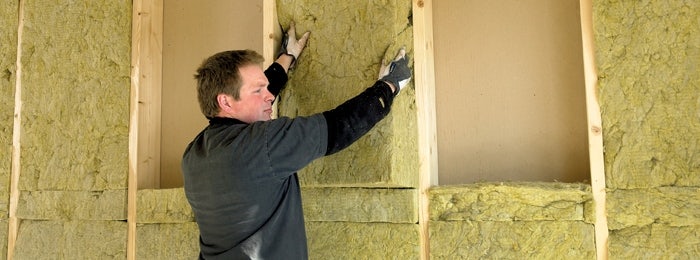
Foil insulation
Foil insulation comes into its own when insulating the rafters. Also known as multifoils, it consists of layers of reflective and insulating materials. This allows heat to reflect into the room.
It’s easy to install as you simply staple the foil to the rafters and tape over any joins.
Acoustic insulation
Perhaps you want to protect your ears from outside noise. Maybe stop neighbours from complaining if you’ve decided to take up the drums. Acoustic insulation is a great idea for many different reasons.
Some acoustic insulation (as seen in the image below) stops noise transfer from room to room. That means it will stop footsteps in the loft travelling to the room below.
From acoustic wool to slabs, sound insulation comes in many forms. Sheep’s wool is a popular choice if noise is an issue. It offers unparalleled warmth alongside effective sound reduction.
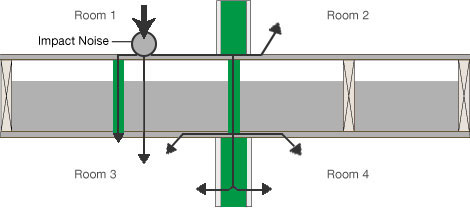
Still in the early planning stage? Our dedicated guide to insulating a loft can help you define your planning process and understand what the best loft insulation is for your circumstances.
The benefits of loft insulation
Loft insulation offers several benefits, including improved energy efficiency by reducing heat loss through the roof, leading to lower heating bills. It also helps maintain a more consistent and comfortable indoor temperature throughout the year by reducing drafts and cold spots.
What’s more, loft insulation can contribute to environmental sustainability by lowering carbon emissions associated with heating, mitigating the impact on climate change.


